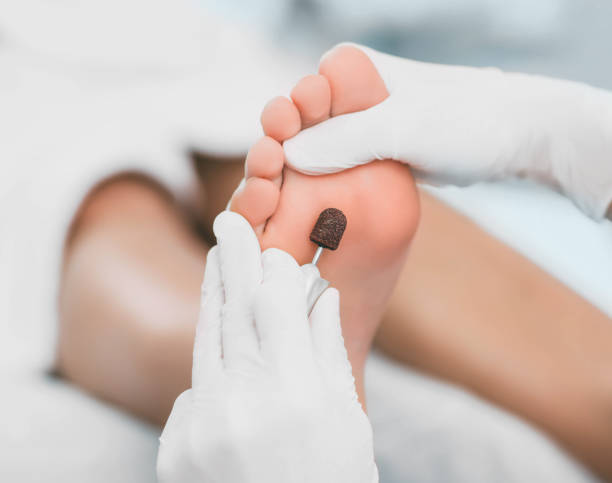Step by Step: Enhancing Health with Podiatry and Physiotherapy Synergy
If you’ve been injured, a podiatrist or physiotherapist can help. Both are healthcare professionals who specialize in treating musculoskeletal conditions.
A physiotherapist can address issues in your lower legs, feet, and ankles as well as other body areas. They take a ‘whole-person’ approach to treatment, focusing on the prevention of injuries.
Personalized Treatment
A podiatrist in Toowoomba specializes in the diagnosis, treatment, and rehabilitation of musculoskeletal foot and lower leg injuries. Their skills, training, and expertise allow them to offer patients an alternative to surgery for many conditions. Podiatrists also help individuals manage pain and improve the quality of their daily lives by reducing or eliminating their reliance on medication and implementing an individualized approach to physical therapy.

Using 3D technology, a podiatrist can create a detailed image of your feet to gain insight into the structure and function of your feet. Then they can recommend a personalized program that will alleviate your pain, increase mobility, and decrease the risk of further injury.
Each individual’s foot structure, gait pattern, and medical history are unique. So too are their needs, which is why podiatrists work closely with physical therapists to develop individualized treatment plans that cater to each patient’s specific needs.
By combining the skills of both podiatrists and physical therapists, patients can get more effective treatment in a shorter period of time. This holistic approach reduces the need for pain medications and allows patients to experience a higher quality of life while addressing the root cause of their discomfort.
Preventive Care
When you have a health issue, preventive services can help detect and diagnose conditions, determine the best treatments, and help you learn how to take care of yourself. These services can also reduce your risk of disease, improve your quality of life, and help you make healthier lifestyle choices.
Podiatrists focus on the prevention, diagnosis, treatment, and rehabilitation of musculoskeletal, medical, and surgical conditions of the feet and lower legs. Physiotherapy is a therapeutic movement-based approach to managing pain and improving mobility. Together, podiatry and Toowoomba physiotherapy can help you recover from injury and live the life you want.
This investigation randomized participants with plantar heel pain (PHP) to receive usual podiatric care only (uPOD) or interdisciplinary care that included physical therapy treatment in addition to podiatry care (uPOD+PT). UPOD included an evaluation by a podiatrist who diagnosed the foot and ankle condition, provided education about the diagnosis, recommended footwear, orthotics, and/or medicines, referred the participant to a physical therapist when indicated, and provided a 6-week and 1-year assessment of the activities of daily living subscale of the Foot and Ankle Ability Measure (FAAM).
In the uPOD+PT group, all participants were referred to a licensed physical therapist for PHP. The therapists used an evidence-based physical therapy program that includes a mix of manual therapy and education/advice to address both local and proximal impairments that contribute to the symptoms of PHP. Physical therapy can increase patient adherence to treatment and enhance clinical outcomes. It can also facilitate the efficient use of limited healthcare resources by reducing the number of patients who must wait for medical specialist referrals. There is increasing support for extending the role of allied health practitioners with prescribing and medicines management skills. For example, physiotherapists are trained to assess and treat back pain, musculoskeletal injuries, and sprains and strains and are increasingly providing triage and initial assessment of patients on medical specialist/surgical waiting lists in some countries. Similarly, podiatrists are trained to manage common gout and diabetic foot problems and have extended scope powers to prescribe medications.
Joint Alignment
Physiotherapists use a wide range of techniques, such as exercise and physical therapies to improve your mobility and health. They also work with you to help you develop a healthy lifestyle and prevent pain or injury in the future.

Using a biomechanical assessment of your feet and joints, a physiotherapist can identify any issues that are impacting your alignment. They can then put together a treatment plan to correct these issues, helping you regain alignment and alleviate your pain.
Podiatrists have a unique professional identity in relation to other healthcare professionals, with their focus on the lower extremity and the importance of foot and ankle health – a ‘healthy foot’ for a ‘healthy body’. However, they are vulnerable to boundary encroachment by other professions and roles due to differences in professional culture and employment status. The emergence of the health care assistant role in podiatry has highlighted this issue as it blurs the line between patient treatment and clinical management and is perceived to threaten the professionalism of the profession.
Minimal evidence exists about barriers to change in podiatry compared with substantial literature on the barriers and implementation strategies in other healthcare professions. The need for further research to identify successful models of practice in order to inform the development of innovative approaches to podiatry is recognized, particularly given the pressures of a transforming NHS and a growing demand for allied health care services.
This study aims to investigate whether the addition of podiatric care by a physical therapist (ePT) to usual podiatry care (uPOD) can reduce the number of visits and costs associated with podiatric treatment. A parallel-group, block-randomized clinical trial will be conducted to compare uPOD+PT and ePT with a control group receiving usual podiatric care alone. All participants will see a podiatrist at their initial visit and, following random allocation may be allocated to receive either ePT or uPOD+PT. The generalizability of this investigation is limited by the fact that usual practice patterns and interdisciplinary collaboration in this investigation were based at one clinic and therefore may not reflect those in other systems or regions.
Rehabilitation
Rehabilitation is the process of restoring your physical health following an injury or surgery. It involves a team of medical professionals who work together to help you heal and learn new skills that will improve your quality of life. During the rehabilitation process, your doctor will develop a treatment plan that is tailored to your individual needs. This will include a combination of therapies such as physical therapy and therapeutic exercises.
Podiatrists are experts in diagnosing and treating foot problems. They are trained to identify minor complaints such as nail conditions, fungal infections, and skin lesions as well as more serious issues like bunions, hammertoes, and joint deformities that can cause chronic pain, swelling, and limited mobility. By visiting a podiatrist for routine foot care, you can prevent these conditions from worsening and avoid costly medical treatments in the future.
Many people rely on their feet to carry them through everyday activities and as such, it is important to keep them healthy and strong. Unfortunately, many people often ignore the signs of foot and ankle problems such as pain, numbness, and discomfort until they become too severe. If these issues are not addressed early on, they can result in more serious health complications and even lead to amputation.
Physiotherapy is a comprehensive treatment that addresses the underlying causes of foot and ankle pain. It also focuses on the patient’s overall lifestyle, including nutrition, exercise, and stress management. By doing this, physiotherapy helps patients to get back on their feet and reduce the risk of future injuries.
The integration of podiatry and physiotherapy not only addresses existing ailments but also pioneers preventive strategies, aiming to mitigate risks and enhance overall patient well-being. By amalgamating the expertise of both disciplines, patients can experience more effective and efficient treatment, reducing reliance on pain medications and improving their quality of life while addressing the root cause of discomfort. This symbiotic relationship between podiatry and physiotherapy opens avenues for enhanced patient care, recovery from injuries, and improved quality of life, reaffirming the significance of this multidisciplinary approach in fostering overall health and wellness.
